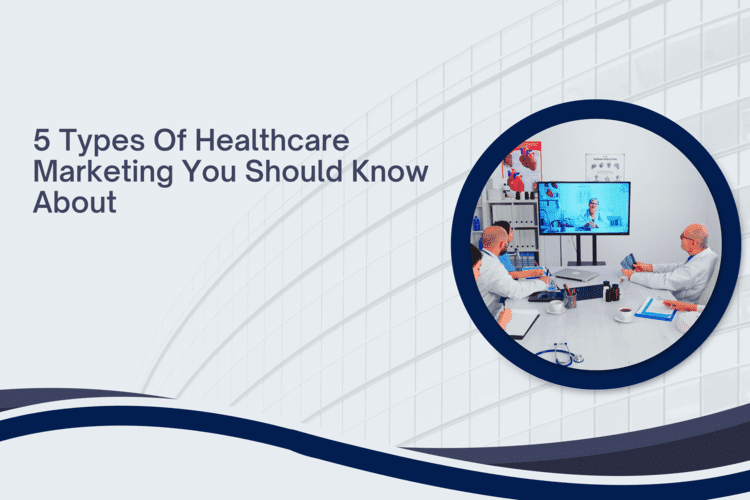
Five Types of Healthcare Marketing you should know About
Marketing has seen a dramatic change throughout the years in various sectors. For example, during the early 1900s, marketing was mainly used to sell products to consumers. However, in the 1970s, businesses began to use marketing more extensively to create demand and increase sales. In recent years, marketing has already started to change once again with the advent of digital marketing. Gone are when marketing was solely done through word-of-mouth recommendations and print ads. Various marketing techniques are now used to engage and entice customers. This evolution has allowed businesses to target specific markets and create more effective campaigns.
Marketing in the healthcare industry has evolved quite a bit since the industry’s inception. Early marketing efforts were primarily directed at convincing the public that healthcare was necessary and beneficial. Over time, healthcare marketers have learned to focus on specific target markets and demographics to reach the most possible prospects. Additionally, healthcare marketers now utilize a variety of digital media platforms to get leads, including but not limited to social media, search engines, and email newsletters.
Healthcare providers need to understand how marketing works to target their audiences correctly; only then can they promote healthy lifestyles. Marketing can also be used to increase brand loyalty and boost customer engagement. Effective marketing can help fund medical research and create new treatments and cures for diseases.
What are the types of Healthcare Marketing?
Healthcare marketing is an industry that is constantly changing to meet the demands of healthcare professionals. Each type of marketing has its advantages and drawbacks, so selecting the most appropriate method for the business’s objectives is essential. It is divided into five major categories:
1. Direct-to-consumer
Marketing to consumers directly is one of the most effective ways to reach them. By targeting leads, physicians, and other critical stakeholders in the healthcare ecosystem, marketers can create tailored messages that are more likely to be heard and acted upon. This approach is particularly successful in driving awareness, encouraging engagement, and influencing decision-making.
2. Indirect-to-consumer
Indirect marketing involves companies distributing information about their products or services through third parties such as magazines or television programs. The third-party provides tools to help track and analyze the campaign and a wide range of services to make the marketing process more accessible.
3. Brand advertising
Brand advertising uses branded messages to attract consumers and physicians. It creates a distinct identity for a brand, product, or service. In healthcare, branding might involve creating a logo or slogan for a hospital or developing a distinct visual style for a campaign.
4. Public relations
Public relations are a strategic communications and marketing approach used by healthcare organizations to enhance their relationships with customers, employees, partners, and other stakeholders. It creates positive perceptions about the institution, its products, and its services. It can also help increase brand awareness and generate leads or sales.
5. Healthcare provider marketing
This type of healthcare marketing is focused on educating physicians about your organization and its services to encourage them to refer their clients to you. Referred customers are more likely to become repeat customers and recommend the healthcare provider to friends and family. Referral marketing can also increase revenues by reducing the cost of goods or services.
Healthcare marketing can be a powerful tool for hospitals and healthcare providers to increase audience engagement, recruitment, and profits. To conclude, different types of healthcare marketing have created different profit margins for businesses, depending on the industry and product. Some companies have benefited from aggressive marketing tactics, while others have focused on relationships with their customers. The companies must determine what kind of healthcare marketing works most effectively for them and help remain in the game.


